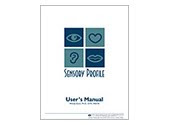Looking for some fun and educational activities to do with your child on a rainy day? Grab a blanket! This simple, common household item can be the source of hours of entertainment and will leave your child asking for more. Here are some of my favorite blanket activities:
- Ring Around the Rosie: While standing sideways, hold the blanket with one hand and walk in a circle, singing Ring Around the Rosie. Fall down to the words, “we all fall down” and similarly stand to the words, “they all stand up.”
- Swap: While standing forward, lift the blanket up high and take turns calling out the name of another person. The person whose name is called must cross under the blanket to the other side before it comes back down.
- Popcorn: Place the blanket on the floor and put soft toys or objects, such as balls, inflatables, stuffed animals or beanbags, into the center of the blanket. While facing forward, raise and lower the blanket, making a popping effect. For additional fun, hide the objects around the room and have your child find them as you call them out.
- See-Saw: Sit on opposite sides of the blanket and cooperatively pull the blanket back and forth while singing See Saw Marjorie Daw. As an alternative, sing Row, Row, Row Your Boat.
- Swing: (Requires two adults.) Place the blanket on the floor. Have one child at a time sit or lay in the middle of the blanket. With each adult tightly gripping opposite ends of the blanket, lift the blanket slightly off of the floor and gently swing it back and forth to the tune of Rock a Bye Baby.
- Turtle: Place a ball or other object to represent turtle food on the opposite side of the room from the blanket. Everyone hides under the blanket on hands and knees. The blanket now becomes the turtle’s shell. The goal is for the turtle to move across the room to get the food without losing its shell.
- Let’s Pretend: Drape the blanket over the back of two or more chairs, or over a table. Play peek-a-boo with younger children. For older children, pretend it is a house or tent. Provide your child with some additional props, such as a tea set, plastic food, pillow, or doll.
- Roller-ball: Place two or more different colored inflatable or soft balls onto the blanket. While standing or sitting, slowly move the blanket up and down in a wave motion. Each person must try to keep his/her color ball from rolling off of the blanket.
- Burrito: Place the blanket on the floor. Have one child lay on the edge of the blanket. The adult rolls the child up in the blanket, like a burrito, being sure not to cover the child’s face. The goal is for the child to either roll or wiggle out of the blanket.
Blanket activities offer many benefits and address a wide-range of developmental skills, including:
- Attending and following directions
- Motor coordination
- Pretend play
- Social interaction
- Communication
- Perception
- Cooperative play, turn-taking and sharing.
While not every child will enjoy every activity, most children will enjoy some of them, so why not give it a try?
